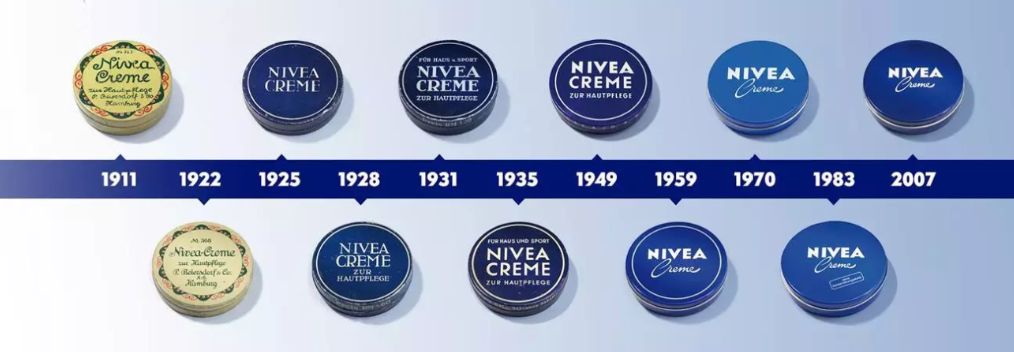Quite often marketing people hear that they “need to figure out something new”, “everyone is bored by this message”, “we need something new and fresh”. And there is this nagging feeling inside of us, which pushes us to start thinking about something new, fresh and different. Despite the fact that companies are obsessed by the idea of making something new, it turns out that consumers are not.
I think one of the most important and also the most difficult tasks of marketing is to maintain brand consistency in marketing activities. Brand consistency is the key to successful marketing.
Why brand consistency is important?
Brand consistency in the look and communication creates a common understanding of the image of the brand in the minds of consumers. Research shows that one person sees/hears up to 362 different advertising messages per day but pays attention only to 12 of them. So, perhaps, you are already bored with that message, but your customers will notice it in the crowd of other advertising messages only after a year. If a brand communicates something different each time, none of the messages will be heard and there will be no clear brand image in the minds of the consumers.
American advertising research company “Communicus” after examining 109 cases where the main message of the brand communication was changed, found that in 74% of the cases the new campaigns showed worse results than before. This indicates that changing the message was not justified by new or modified products but rather by the change in marketing team or agency or the management’s desire for “something fresh”.
How to maintain brand consistency?
After more than fifteen years in the field we have distilled 5 key things that help maintaining brand consistency.
#1 Clearly defined brand positioning
It is never too late to clearly define the target audience of the brand, its key values and the promise to customers. The positioning of a brand is like a foundation of a building and serves as the cornerstone of all future activities. If the key values of the brand and the promise to the customer is not defined, then each advertising campaign will communicate something else, each person working with the brand will guide it based on their own discretion and each artist will have a different vision of the brand’s look.
#2 Consistent look of the brand
Each brand must have a clearly recognizable visual image including the logo, colors, fonts, image style and other design elements. Of course, it is important to keep up with the times, but to do it carefully, so that the visual aspects that have been recognizable for years would not be drastically changed for no reason. Therefore, in our practice, when a customer contacts us requesting to change the logo, we always assess the usefulness of such a step and try to keep the most important and recognizable elements of the logo. We take our hats off to those brands who have been able to remain relevant and change while maintaining a common style throughout the years. For example, Nivea packaging has not changed drastically since 1925.
#3 Brand communication must be consistent and in line with the values of the brand
The values of Dove brand are Tenderness, Authenticity and Confidence. The first Dove campaign communicating these values – “The Real Beauty” – was launched in 2004 and the same message has been communicated for 15 years. Of course, different means and methods are used, but the key message remains the same.
#4 Select appropriate communication channels for the positioning of the brand
It makes no sense to advertise a cutting-edge technology product in the newspaper, as it definitely will not create an image of a modern and technological brand. Should a luxury clothing brand advertise in a mass-marketed magazine – it could create a misconception regarding this brand, is it really that exclusive after all?
#5 Provide unified customer experience at every touchpoint
Clients perceive information not only from advertising. They will gain certain experience when they purchase the product or service, they see/hear reviews from other people, they learn information in the news, they have a certain feeling when entering.
The store or the place where the service is provided. This is particularly important in the service industry, where the environment, process and people who provide the service are essential. For example, if a car service positions itself as friendly but when I enter it, no-one is paying attention to me, I will have a completely opposite idea of the brand and I may not return the second time. Therefore, it is important to ensure unified, consistent customer experience at all points of contact.
In this case, the client’s journey is very helpful, as we are working together with the company employees to identify different points of contact with the company, evaluate the client’s experience and think about how we can improve the client’s experience to create that “wow” feeling that turns a regular customer into a loyal one.
Finally, I would like to share the MAYA law, which was invented in the mid-90s by the industrial designer Raymond Leowy – “Most Advanced Yet Acceptable”. It teaches – if you want to breathe a new life into a brand, you should do it by refreshing something already known and recognizable by the consumers rather than create something completely new and unknown.
And, of course, the marketing manager should be tough enough to withstand the subjective comments and suggestions of their colleagues saying that “we need to figure out something new”, “everyone is bored by this message”, “we need something new and fresh”.
I’m wishing you consistent stand! 🙂
Reference: The Drum, 2017, Nivea webpage










